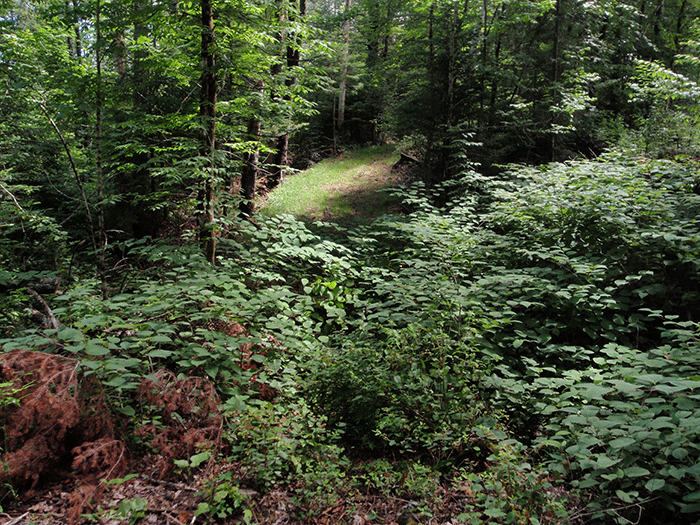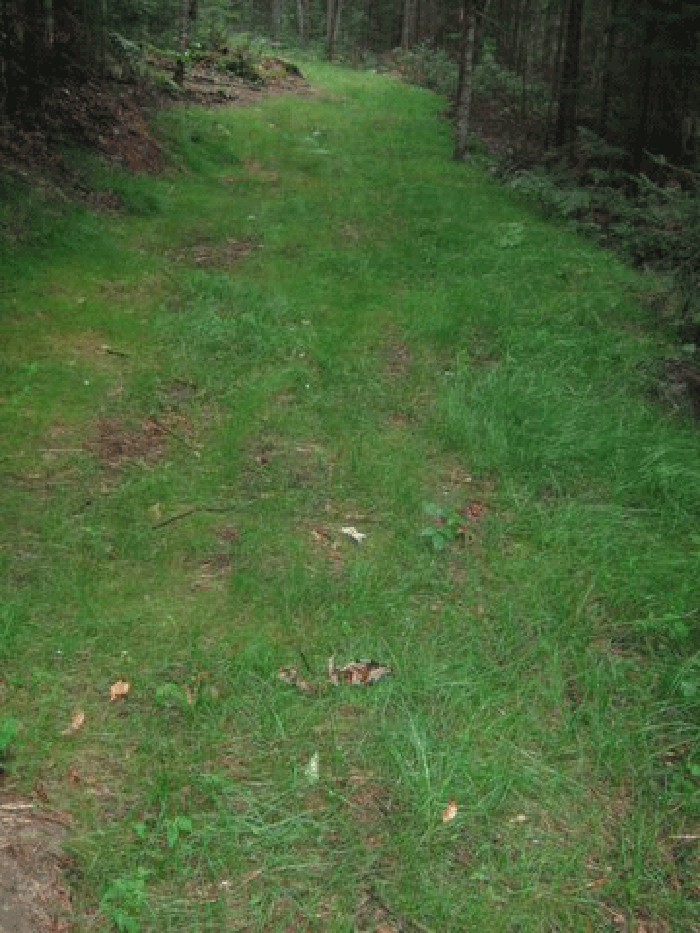This summer Protect the Adirondacks was in near constant legal skirmishes with the Adirondack Park Agency (APA) and Department of Environmental Conservation over tree cutting to build the newest snowmobile trail from Newcomb to Minerva. We stopped the state from tree cutting for most of the summer, and all of September, and we’ll be in court again in October.
This trail requires cutting over 15,000 trees and extensive grading with heavy machinery to widen and flatten a 9-12 foot wide road-like corridor. Our work has kept over 8,500 trees standing tall in the forest. Our argument is, in essence, that the Cuomo Administration is building a network of new roads through the “forever wild” Forest Preserve. The land cleared to build the trail from Newcomb to Minerva is between 13-17 acres. We believe that the total number of trees being cut, the land being cleared, and the vast alteration to the landscape to build these trails violates Article 14, Section 1, the forever wild provision of the State Constitution.
The negative impacts from this kind of road-like trail building are many. At the Newcomb end of the trail we’re seeing one such negative impact in full bloom. The state cut a section of this trail around the parking lot of the Camp Santanoni Historic Area, which connects to an old road heading east and then links up with a mile or so of new trail cut down to the Lake Harris Campground. The new trail cut around the parking lot, through what had been intact forest, now has a major infestation of Japanese knotweed (Fallopia japonica), a major invasive plant that grows in disturbed areas and roadsides throughout the Adirondacks.

Japanese knotweed has infested a stretch of the new class II community connector snowmobile trail built around the parking lot, in intact Forest Preserve, around the Camp Santanoni Historic Area.
While we’re grateful that the Cuomo Administration doubled funding for invasive species control and management in this year’s Environmental Protection Fund, we hope that the state will use some of these funds to tackle this infestation of knotweed. Thankfully, there are successful treatment options for knotweed, but they require sustained attention that often takes multiple applications over several years.

Ragweed has infested the highly disturbed parts of the new class II community connector trail to Lake Harris.
The trail to Lake Harris received extensive work with heavy machinery to grade, flatten and build up the trail to make it a drivable 9-12 foot wide corridor, which is even wider at many points. Because the trail surface was so disturbed and torn up during construction, the state planted it with a grass seed mix and now in many places, especially where the canopy was opened, there are long stretches of grassy fields of sun-loving plants running through what had been an intact forest.
Unfortunately, somehow these long grassy stretches have become a breeding ground for Common ragweed (Ambrosia artemisiifolia), another invasive plant. It’s flourishing in the grassy fields along this trail above Harris Lake.
How did these infestations occur? Was the machinery used by DEC infested? Were seeds transported on equipment or boots? Were seeds embedded in bridge materials brought from outside the area? Was soil brought in from outside the area? Was the state’s grass seed mix contaminated? Who knows.
What we do know is that highly disturbed areas are susceptible to infestations of invasive species and that road corridors are the primary vectors for invasive species to penetrate to the interior of the Forest Preserve.





